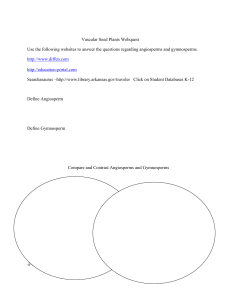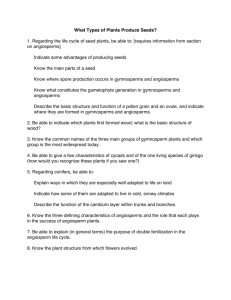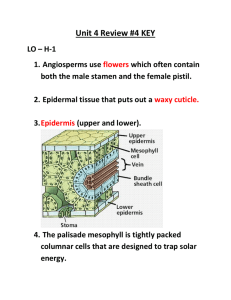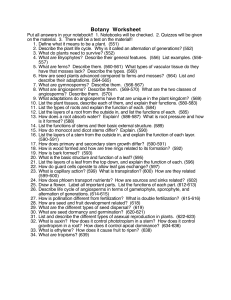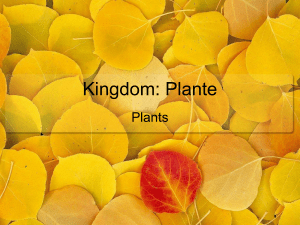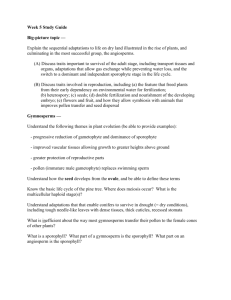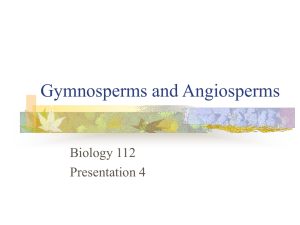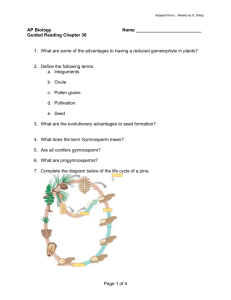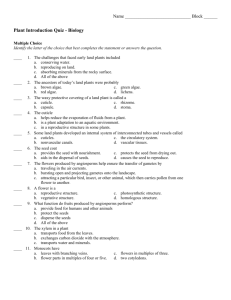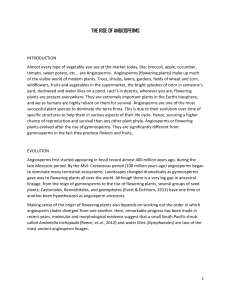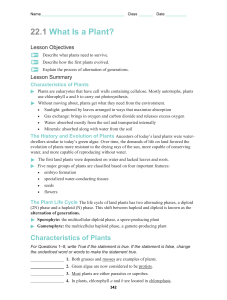BSC 2011 Study Guide Chapter 30
advertisement
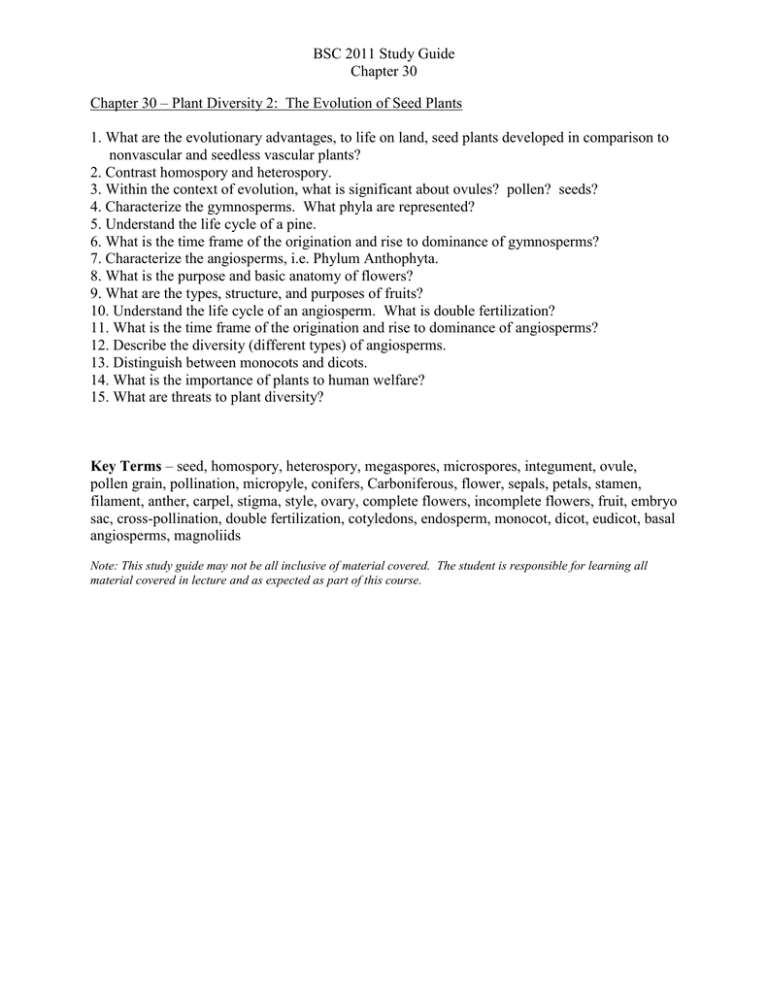
BSC 2011 Study Guide Chapter 30 Chapter 30 – Plant Diversity 2: The Evolution of Seed Plants 1. What are the evolutionary advantages, to life on land, seed plants developed in comparison to nonvascular and seedless vascular plants? 2. Contrast homospory and heterospory. 3. Within the context of evolution, what is significant about ovules? pollen? seeds? 4. Characterize the gymnosperms. What phyla are represented? 5. Understand the life cycle of a pine. 6. What is the time frame of the origination and rise to dominance of gymnosperms? 7. Characterize the angiosperms, i.e. Phylum Anthophyta. 8. What is the purpose and basic anatomy of flowers? 9. What are the types, structure, and purposes of fruits? 10. Understand the life cycle of an angiosperm. What is double fertilization? 11. What is the time frame of the origination and rise to dominance of angiosperms? 12. Describe the diversity (different types) of angiosperms. 13. Distinguish between monocots and dicots. 14. What is the importance of plants to human welfare? 15. What are threats to plant diversity? Key Terms – seed, homospory, heterospory, megaspores, microspores, integument, ovule, pollen grain, pollination, micropyle, conifers, Carboniferous, flower, sepals, petals, stamen, filament, anther, carpel, stigma, style, ovary, complete flowers, incomplete flowers, fruit, embryo sac, cross-pollination, double fertilization, cotyledons, endosperm, monocot, dicot, eudicot, basal angiosperms, magnoliids Note: This study guide may not be all inclusive of material covered. The student is responsible for learning all material covered in lecture and as expected as part of this course.

